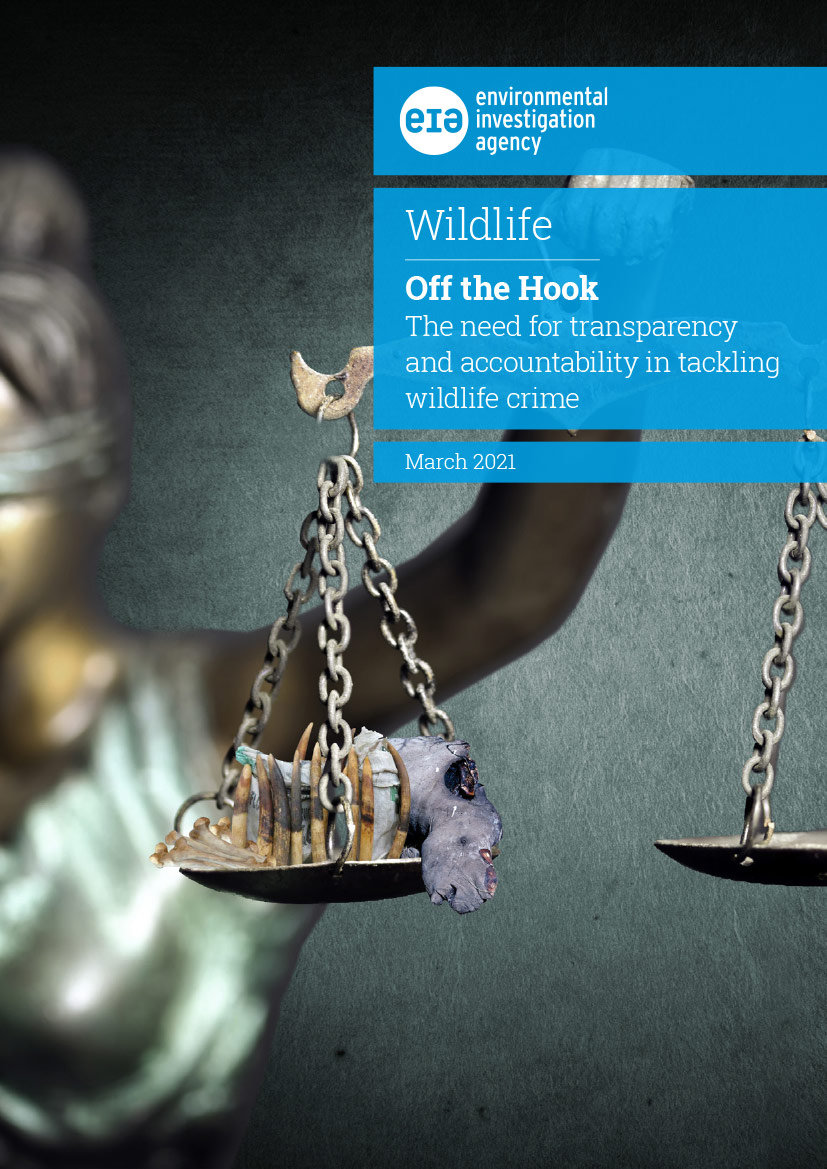Off the Hook – The need for transparency and accountability in tackling wildlife crime
Tackling wildlife crime, stepping up anti-corruption efforts and enhancing access to information and justice are key to achieving the United Nations Sustainable Development Goals.
Legislation and law enforcement are powerful behaviour change mechanisms for reaching these targets, which should be constantly evaluated and improved.
EIA recommends the use of specific indicators to evaluate progress and identify key gaps in global efforts to end wildlife crime and was a partner in the development of the Indicator Framework for Combating Wildlife and Forest Crime, produced by the International Consortium on Combating Wildlife Crime (ICCWC). This includes identifying legislative loopholes and measuring progress by analysing the law enforcement outcomes following wildlife seizures.
EIA maintains a comprehensive database of global wildlife seizures of Asian big cats, elephants, pangolins and rhinos and monitors the progress of key countries implicated in wildlife crime.
It has been encouraging to see governments stepping up their efforts in recent years to amend laws and make seizures to better address wildlife crime; however, seizures should not be seen as the end of the process but, rather, the opportunity to conduct follow-up investigations to disrupt wildlife crime networks.


